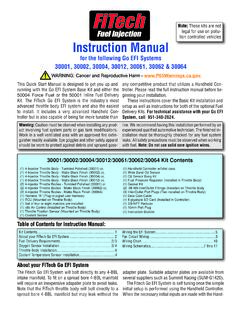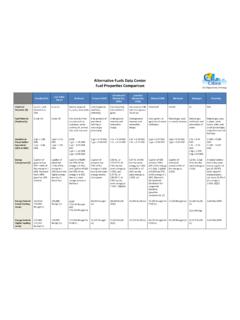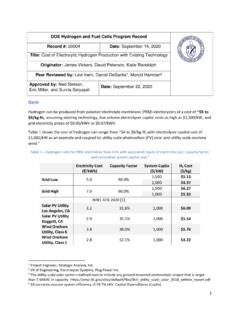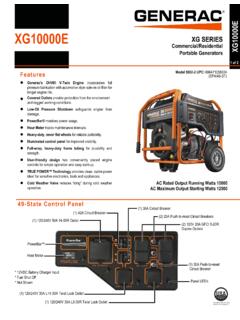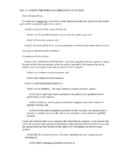Transcription of FiTech Handheld User Manual - FiTech Fuel Injection
1 FiTech Handheld User Manual Contents Introduction and Important Notes .. 2. Disconnect if Storing Vehicle .. 2. Connecting to FiTech System .. 3. Buttons/Navigating .. 3. Dashboard (View Live Data) .. 4. LARGE Gauges (View a Mini-Dash Panel) .. 4. Showing Actual Dial Gauges! .. 5. Making changes (Tuning) .. 5. PRO 6. Reading and Clearing Faults (Fauld Code menu) .. 6. Writing Calibrations (Write Cal to ECU) .. 7. With LS Systems DO THIS Write Cal to ECU FIRST .. 7. Reading Calibrations (Read Cal from ECU).. 7. Renaming Calibration Files on Laptop .. 8. Making Log Files (Dashboard and Data Logging) .. 9. Accessing Log Files (Connecting to a laptop) .. 9. Updating Firmware of ECU.
2 11. For Bug Fixes Only .. 11. For Upgrades .. 11. Updating Firmware of Handheld .. 11. Connecting to Laptop Software (for using FiTech Laptop Software) .. 12. Copy and Install Laptop software to your laptop .. 12. Set Handheld to Laptop Software Connection .. 12. 1. Handheld User Manual Introduction and Important Notes Welcome to the new FiTech Handheld controller! Some cool features are: Touch screen + navigation button pad, large display, brilliant colors, several gigs of datalogging memory, 2 USB C connection options (one on a dongle to avoid connector damage), and a nice soft finish. The Handheld is what is used to make changes to the calibration (settings, parameters, AFR targets, idle speeds, spark tables, shift points, etc.)
3 And for viewing what's going on in your system. It is not required for operation after you've performed the required initial setup and basic tuning. You can disconnect it, and put it in the glove box after things are running well. Don't leave home without it, though - if you find a problem and want to see what's going on you'll want to have it handy. Disconnect if Storing Vehicle It is recommended that the Handheld be disconnected if the vehicle is to be parked for more than a few days. There is a small current drain when connected (even with the screen blanked out). Disconnecting the vehicle battery is also an OK way of preventing such drain. All FiTech systems will retain their memory and learning, even with battery or handhelds disconnected, as long as they were allowed proper time to save the settings with the key off and battery connected.
4 2. Connecting to FiTech System This is not hard. It's just a cable. Make sure the cable doesn't get pinched and cut anywhere. Make sure there is sufficient grommets and gaseous fume barrier used when passing through firewalls. One side of the cable connects to the wire harness of your FiTech system, and the other to the Handheld . Buttons/Navigating The soft buttons on the right are for navigating menus, changing values, and sending values to the ECU (computer, brain, the thing that actually runs the engine and/or transmission). You'll see that there are left, up, right, down, ( )and OK buttons. If you want to use the arrow pad to navigate BACK, just hold the UP ( )button for 2 seconds.
5 If you want to scroll down by ones, click DOWN ), and up is UP ( ). To adjust calibration values, or to make a value be Large or Show or Hide (from various menus), use the LEFT ( ) and RIGHT( ) arrows. On calibration values, holding LEFT ( ) or RIGHT( ) will quickly adjust the values. Remember that the just-changed calibration values need to be sent to the ECU by clicking OK, or tapping Send to ECU on the screen (and receiving the Sent to ECU Succeed message and the Ignition Key must be ON to allow this to occur otherwise it will not send the changes. Most changes can be done on the fly. All changes are permanent after the key is turned off for about 10 seconds (the ECU goes through an IAC reset, and then does the memory rewrite.)
6 Some special modes are not saved . such as TPS Zero mode, and Trans Dyno mode they always reset to off. 3. Dashboard (View Live Data). Dashboard will show a bunch of information about what's happening with the system. You can scroll down it to see all that is going on. You can even record what's happening by simply pressing the OK. button, or Log On button. These log files are stored on the Handheld , and can be retrieved by taking the Handheld to a laptop and following the instructions in the Retrieve Log Files section. LARGE Gauges (View a Mini-Dash Panel). Large Gauges will allow up to 4 parameters to be viewed in a large font. To select which items are shown, just set the value on the right to be Large.
7 If you try to select more than 4 items, it won't allow it, so you'll need to set a Large item to OFF before you can select a new item to show. 4. Showing Actual Dial Gauges! A bonus feature is that if you select 1 or 2 items, a special gauge panel will be displayed with AFR, AFR. Target, TPS, MAP, and RPM, plus the 1 or 2 items that were selected. Making changes (Tuning). When trying to change parameters on a FiTech system, it's important to be connected to the vehicle with the ignition switch on. It is also important to send (press OK on) each parameter that is changed, individually. This method was chosen to avoid accidental changes made while scrolling menus, and to build the habit to be deliberate with the change.
8 5. PRO Tuning In Display Setup, you can allow access to (by changing the item to Show ) the PRO Tuning and possibly POWER ADDER and/or N2O Tuning if you have a Power Adder EFI system. These groups allow finer tuning and access to other settings. Reading and Clearing Faults (Fauld Code menu). Entering this menu will show any LONG TERM SAVED CONFIRMED FAULTS. This may show faults that have been cured. When fault conditions are first detected (maybe a sensor voltage is out of range), it may take a few moments before it is determined to be a long-term fault. Once detected as a long-term fault, it takes many trips before stored faults are automatically erased from the ECU memory.
9 If you'd like to erase any recorded faults, click OK or tap Clear from within the Fault Code screen. If the faults show up again, then you'll know there is something that needs to be addressed. Some faults, such as FAN Relay faults may show up if you haven't properly set up the system to tell it that you're not using the ECU to control the electric fans. Some systems will show a coil fault if connected to a CDI box (this is normal, and sorry for the inconvenience). 6. Writing Calibrations (Write Cal to ECU). Sometimes, when setting up a FiTech system or when going back to a backup calibration, you'll need to use the Write Cal to ECU function. This needs to be done with the ignition switch on, while connected to the system.
10 If you've written a default calibration to the ECU, you WILL need to do the initial setup again. Key points in initial setup would be Engine size, cam selection, desired warm idle speed, and on some systems . which type of RPM input is being used (Tach or 2-wire). With LS Systems DO THIS Write Cal to ECU FIRST. Because of the many calibration differences for 24x and 58x and 4L60e and 4L80e transmissions, use the correct calibration to Write Cal to ECU before even attempting to start the engine. You'll regret missing this step if you have a 58x system. Reading Calibrations (Read Cal from ECU). When you've made some changes to your calibration, and want to create a backup, it's a good idea to do a Read Cal from ECU to save the calibration to your Handheld 's memory card.
